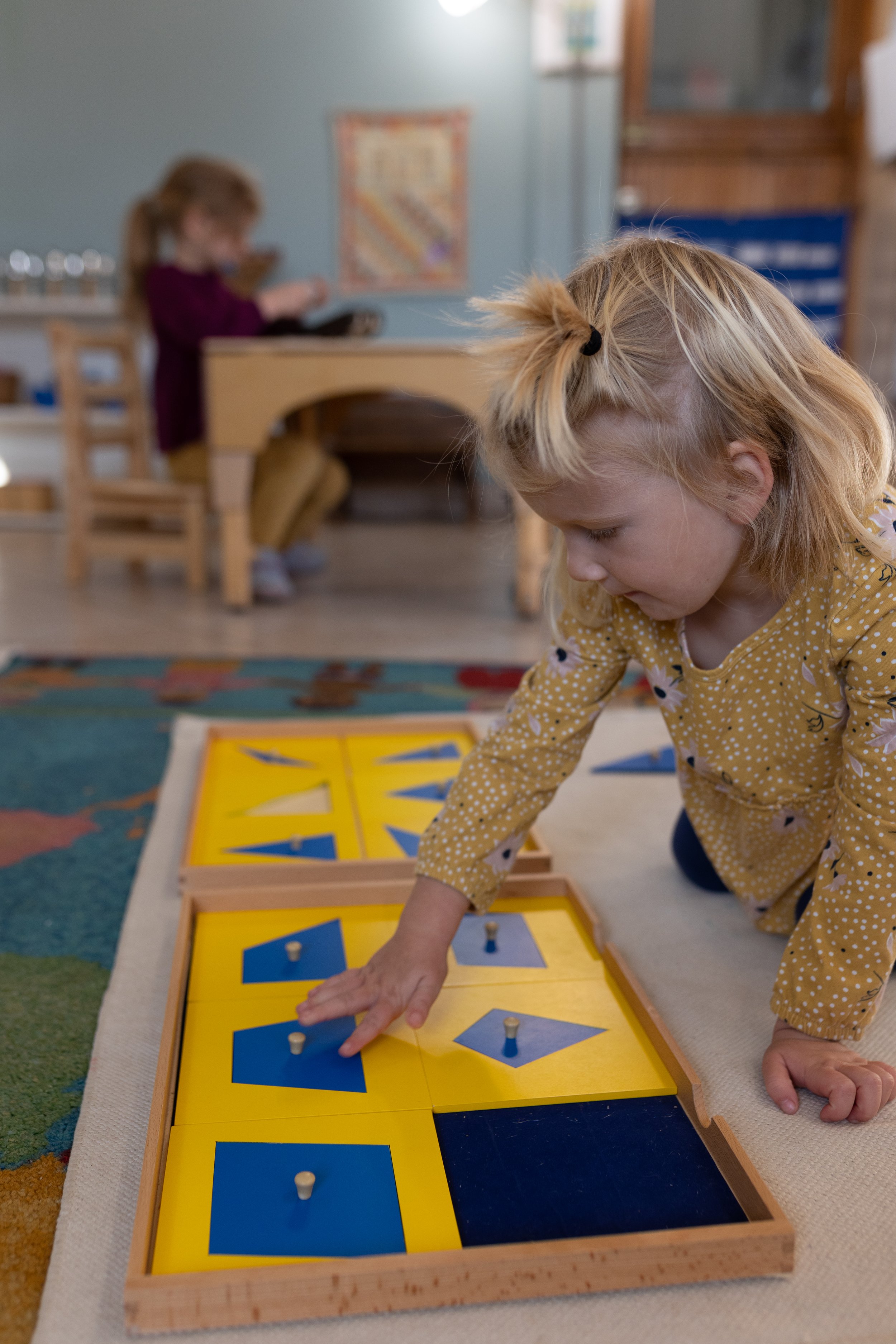Children’s house COMMUNITY
Ages 3-6 years old
The Children’s House Community nurtures the children’s natural motivation by complimenting their enthusiasm for learning with opportunities to fulfill their needs and interests. Each classroom’s prepared environment invokes the children to come and touch; the materials are beautifully and orderly arranged, and ARE the work through which the child learns.
Each new work is presented to the child and offers a new challenge for the child to master. Every work is built upon the other, leading the child toward independence and confidence. The work cycle each morning allows the child an uninterrupted period for self-directed concentration. A child may request a new lesson, or return to practice lessons already presented. Over time the child will progress toward a well-balanced use of self-directed time, a state Maria Montessori referred to as ‘normalization’.
The Montessori classroom provides four main areas; Practical Life, Sensorial, Language, and Mathematics. Additionally, included in each classroom are Geography, Art, Music, and Science.
PRACTICAL LIFE
Practical Life are activities that a child encounters in daily living, such as pouring, sorting, matching, sweeping, and polishing. These excercises build self-esteem, fine motor, focus, and concentration.
LANGUAGE
Children are immersed in Language throughout the day. They participate in conversations, songs, poems, stories, and discussions. The children learn phonetic skills necessary for composition and reading.
SENSORIAL
Each Sensorial material isolates one quality such as size, volume, width, length, touch, temperature, weight, color, shape, and sound. Repetition is encouraged to allow the child to achieve mastery.
MATHEMATICAL
Basic Mathematical foundations of order, sequence, patterns, relationships, quantity, and dimensions, are developed in Practical & Sensorial areas. Now the child is ready to go on and add numerical value to the concepts already absorbed.
Our Lady’s Montessori School strives to provide an environment rich with sciences, geography, art media, and music appreciation, through animal life, plant life, and cultural studies
Lower and upper Elementary COMMUNITY
Ages 6-9 years old and 10-12 years old
The elementary environment reflects a new stage of development, ages six to twelve, can be identified by three main characteristics:
the child moves from concrete to abstract thinking,
the development of reasoning ability,
and a focus on social relationships.
As these characteristics develop, the child more consciously takes initiative of her learning experience. She begins to direct her questions, explorations, and connections based on personal interests and desires.
The Montessori elementary environment offers the following:
Integration of the arts, sciences, geography, history, and language into the learning experience evoking the native imagination and abstraction of the elementary child.
Presentation of the formal scientific language of zoology, botany, anthropology, geography, geology, etc., exposing the child to accurate, organized information and respecting the child's intelligence and interests.
The use of timelines, pictures, charts, and other visual aids to provide a linguistic and visual overview of the first principles of each discipline.
Presentation of knowledge as part of a large-scale narrative that unfolds the origins of the earth, life, human communities, and modern history, always in the context of the wholeness of life.
A mathematics curriculum presented with concrete materials that simultaneously reveal arithmetic, geometric, and algebraic correlations.
Emphasis on open-ended research and in-depth study using primary and secondary sources (no textbooks or worksheets) as well as other materials.
As in the preschool, the Montessori materials are a means to an end. They are intended to evoke the imagination, to aid abstraction, to generate a world view about the human task and purpose. The child works within a philosophical system asking questions about the origins of the universe, the nature of life, people and their differences, and so on. On a factual basis, interdisciplinary studies combine geological, biological, and anthropological science in the study of natural history and world ecology.
“It is like the sun the appears at dawn, or a flower just beginning to bloom. Education cannot be effective unless it helps a child to open himself up to life.” ~Maria Montessori





